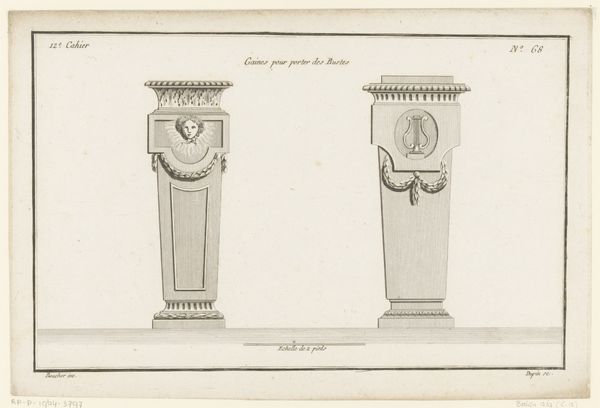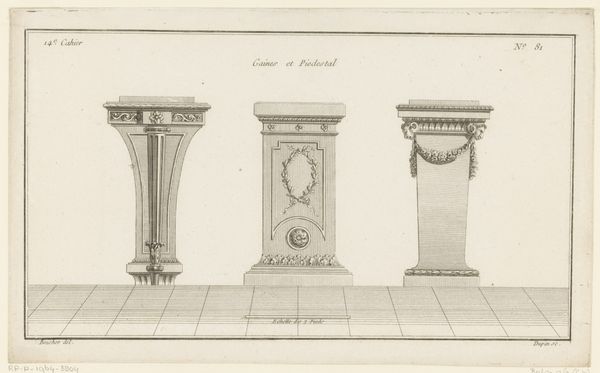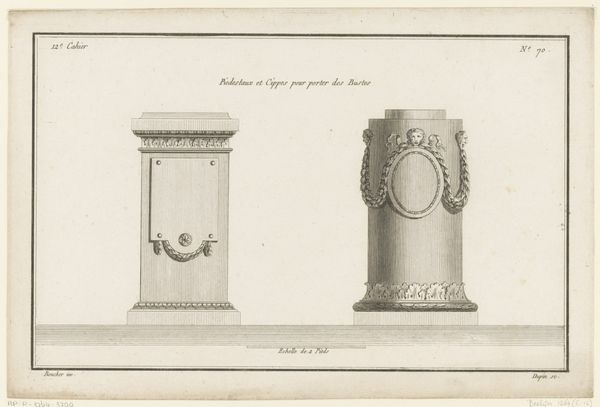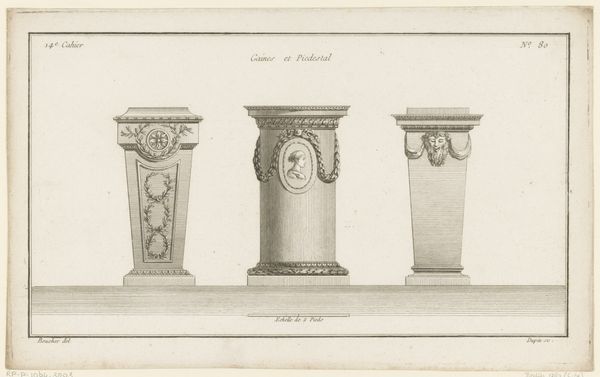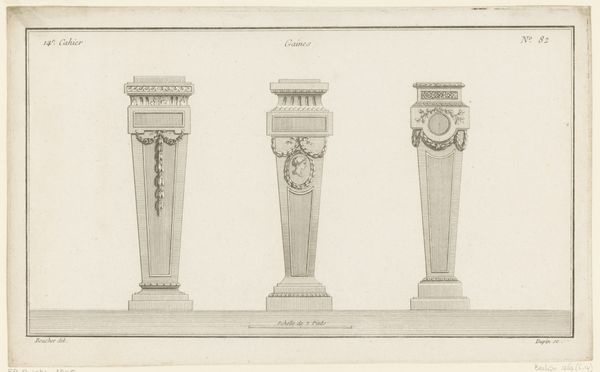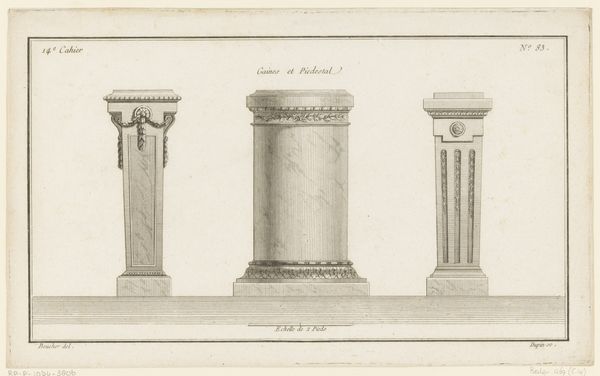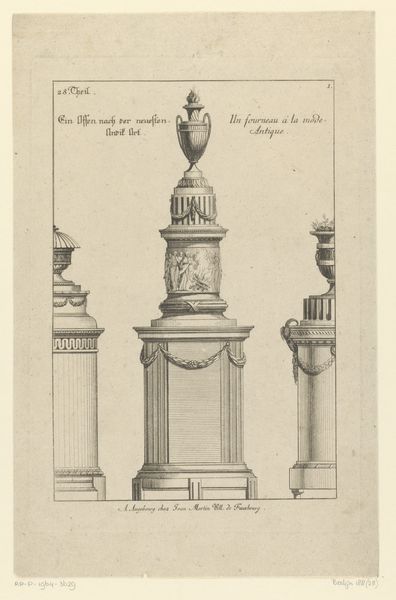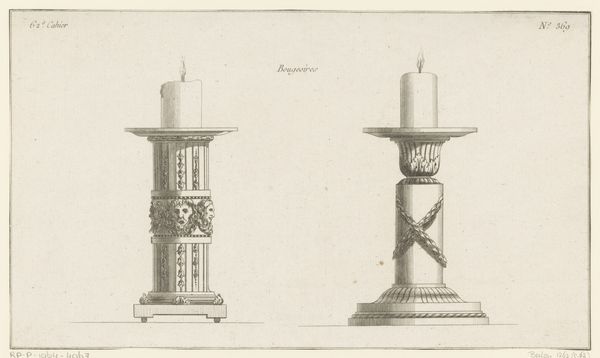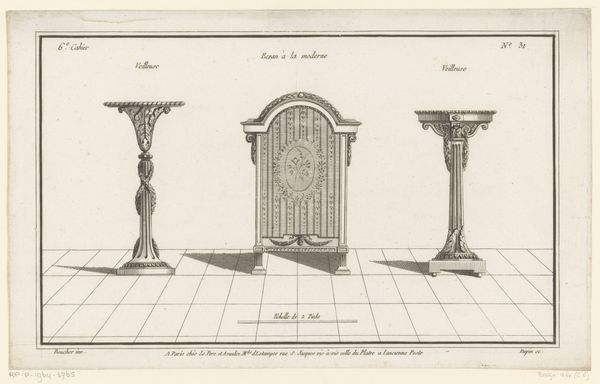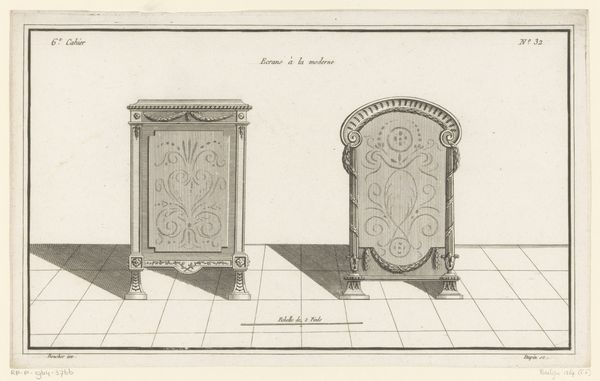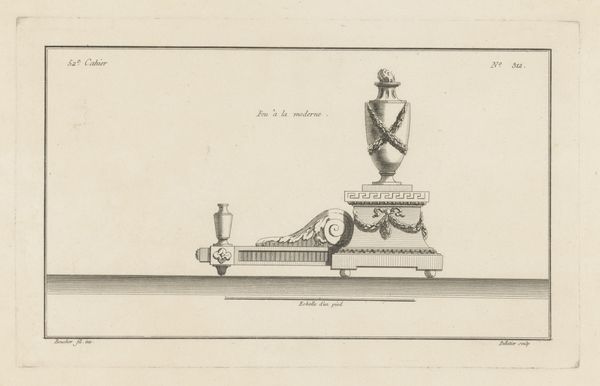
drawing, print, pen, engraving
#
drawing
#
neoclacissism
# print
#
form
#
geometric
#
pen
#
engraving
Dimensions: height 213 mm, width 320 mm
Copyright: Rijks Museum: Open Domain
Curator: At the Rijksmuseum, we're looking at "Two pedestals with medallions," an engraving by Nicolas Dupin from the 1770s, crafted with pen, print, and drawing techniques. What strikes you first about this piece? Editor: It's serene, almost ghostly, with its monochrome palette. The precision in the lines gives it a sense of restrained power, yet there's a curious absence, a hollowness. The medallions look as if they're waiting for something—or someone. Curator: Indeed, Dupin's work embodies the Neoclassical spirit, evoking a cultural longing for classical ideals. It is an image that offers us a return to Roman austerity while presaging contemporary forms, which speaks to the circular patterns of taste that prevail over the *longue durée*. What do these stark forms represent for the generations that inherited these neoclassical structures? Editor: Perhaps the yearning for an idealized past mirrors a discontent with the present. These pedestals, intended to elevate busts, almost become monuments themselves, silent assertions of authority and cultural heritage. The blank medallion on the second pedestal really intensifies that feeling of loss. Curator: Absolutely. Note also the meticulous details. The laurel wreaths around the portrait and the blank space…symbols of triumph and virtue. It speaks to the pervasive cultural values propagated via official art in pre-Revolutionary France and hints at a political theater waiting for actors. What stories were supposed to be displayed, what ideologies amplified? Editor: And what stories ultimately *couldn’t* be told? That vacant space makes me think about censorship, erasures, historical gaps. There’s power in what’s not there, too, a potent absence ripe for speculation. These pedestals, these emblems, suggest so much more than they reveal. Curator: In examining Dupin's creation, we gain insight into both the artistic conventions of the late 18th century and the socio-political landscape that gave rise to it. The artwork becomes a tangible embodiment of complex human aspirations. Editor: For me, this work exposes how power is so often symbolized by absence, by something we long for. The ghostly quality endures.
Comments
No comments
Be the first to comment and join the conversation on the ultimate creative platform.
